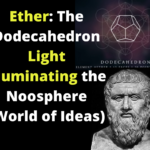There is both religion and science in these Scandinavian songs of heathendom. As an example of the latter, take the conception of Thor, the son of Odin. Whenever this Hercules of the North would grasp the handle of his terrible weapon, the thunderbolt or electric hammer, he is obliged to put on his iron gantlets. He also wears a magical belt,
Page 161
known as the “girdle of strength,” which, whenever girded about his person, greatly augments his celestial power. He rides upon a car drawn by two rams with silver bridles, and his awful brow is encircled by a wreath of stars. His chariot has a pointed iron pole, and the spark-scattering wheels continually roll over rumbling thunder-clouds. He hurls his hammer with resistless force against the rebellious frost-giants, whom he dissolves and annihilates. When he repairs to the Urdar fountain, where the gods meet in conclave to decide the destinies of humanity, he alone goes on foot, the rest of the deities being mounted. He walks, for fear that in crossing Bifrost (the rainbow), the many-hued AEsirbridge, he might set it on fire with his thunder-car, at the same time causing the Urdar waters to boil.
Rendered into plain English, how can this myth be interpreted but as showing that the Norse legend-makers were thoroughly acquainted with electricity? Thor, the euhemerization of electricity, handles his peculiar element only when protected by gloves of iron, which is its natural conductor. His belt of strength is a closed circuit, around which the isolated current is compelled to run instead of diffusing itself through space. When he rushes with his car through the clouds, he is electricity in its active condition, as the sparks scattering from his wheels and the rumbling thunder of the clouds testify.
The pointed iron pole of the chariot is suggestive of the lightning-rod; the two rams which serve as his coursers are the familiar ancient symbols of the male or generative power; their silver bridles typify
the female principle, for silver is the metal of Luna, Astarte, Diana. Therefore in the ram and his bridle we see combined the active and passive principles of nature in opposition, one rushing forward, and the other restraining, while both are in subordination to the world-permeating, electrical principle, which gives them their impulse. With the electricity supplying the impulse, and the male and female principle combining and recombining in endless correlation, the result is — evolution of visible nature, the crown-glory of which is the planetary system, which in the mythic Thor is allegorized by the circlet of glittering orbs which bedeck his brow. When in his active condition, his awful thunderbolts destroy everything, even the lesser other Titanic forces. But he goes afoot over the rainbow bridge, Bifrost, because to mingle with other less powerful gods than himself, he is obliged to be in a latent state, which he could not be in his car; otherwise he would set on fire and annihilate all. The meaning of the Urdar-fountain, that Thor is afraid to make boil, and the cause of his reluctance, will only be comprehended by our physicists when the reciprocal electro-magnetic relations of the innumerable members of the planetary system, now just suspected, shall be thoroughly determined. Glimpses of the truth are given in the
Page 162
recent scientific essays of Professors Mayer and Sterry Hunt. The ancient philosophers believed that not only volcanos, but boiling springs were caused by concentrations of underground electric currents, and that this same cause produced mineral deposits of various natures, which form curative springs. If it be objected that this fact is not distinctly stated by the ancient authors, who, in the opinion of our century were hardly acquainted with electricity, we may simply answer that not all the works embodying ancient wisdom are now extant among our scientists. The clear and cool waters of Urdar were required for the daily irrigation of the mystical mundane tree; and if they had been disturbed by Thor, or active electricity, they would have been converted into mineral springs unsuited for the purpose. Such examples as the above will support the ancient claim of the philosophers that there is a logos in every mythos, or a ground-work of truth in every fiction.

Moe is the founder of GnosticWarrior.com. He is a father, husband, author, martial arts black belt, and an expert in Gnosticism, the occult, and esotericism.






